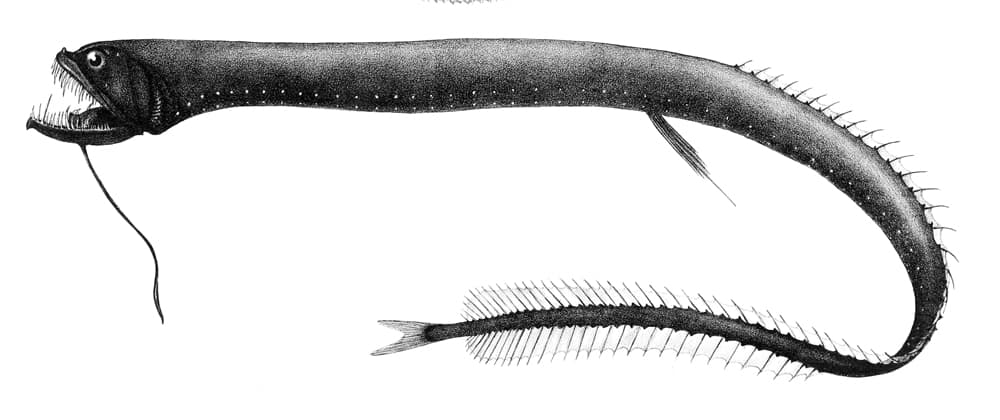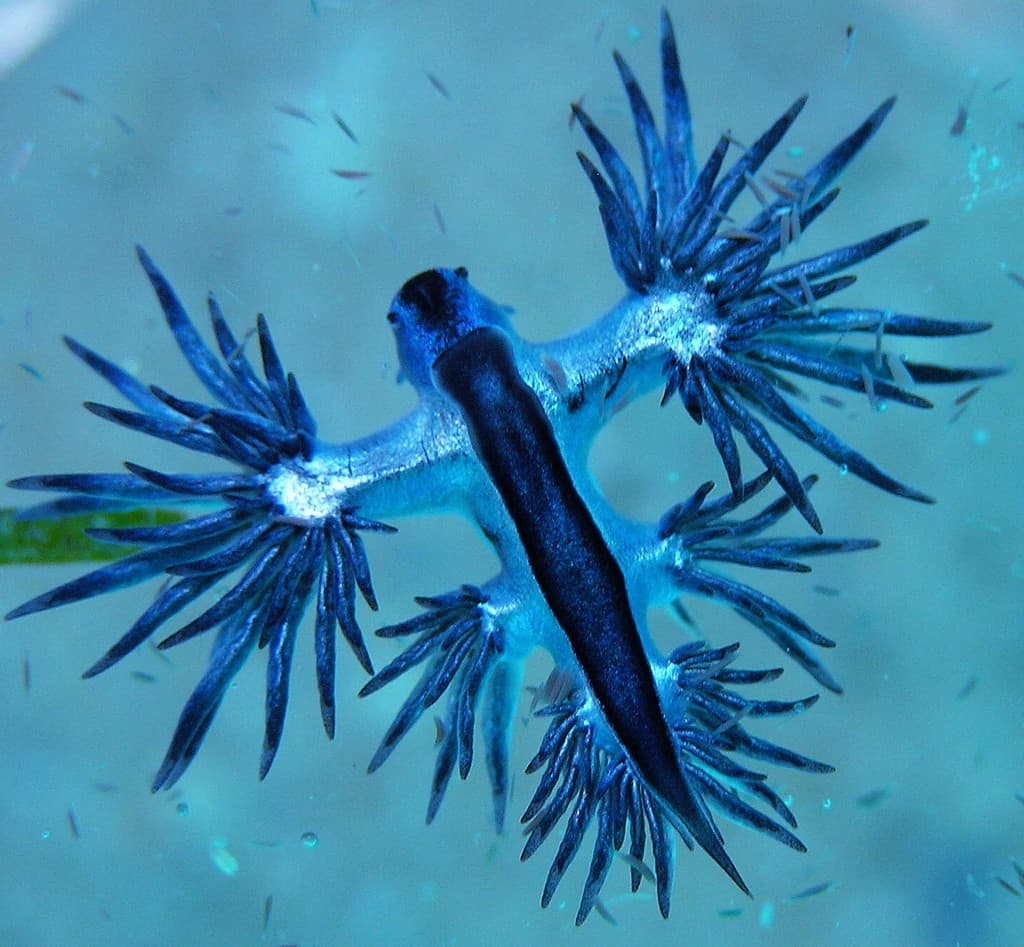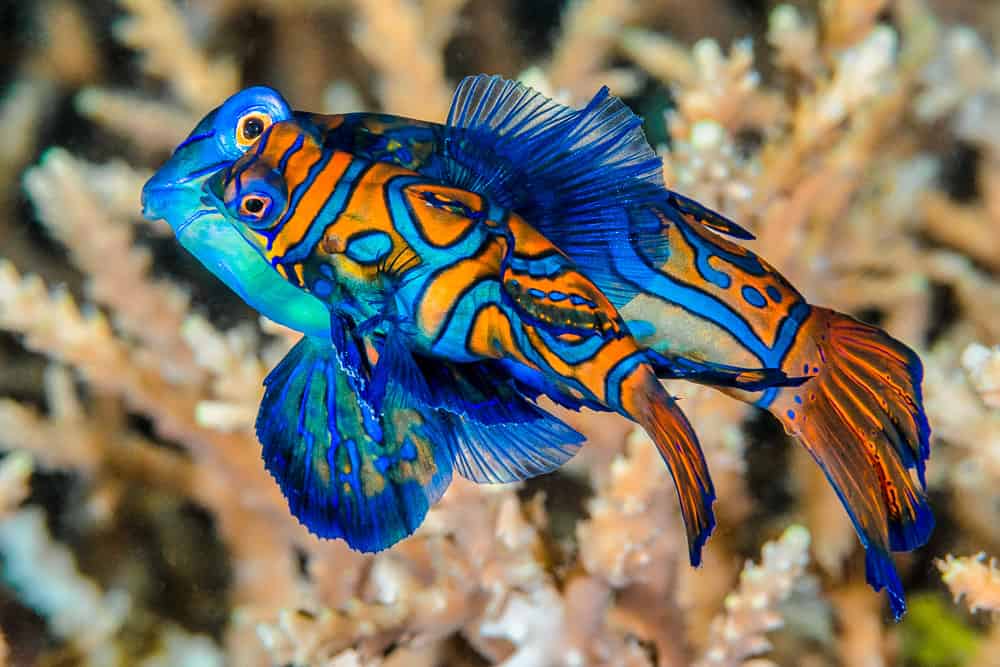
You’ve heard of the dragon, a mythical creature breathing fire, gracing the pages of fantasy novels and movies. But have you met its real-world underwater counterpart, the dragonfish? Dive with us as we explore these captivating creatures of the abyss.
Dragonfish isn’t actually a species; the term refers to a whole family (Stomiidae) of underwater dwellers. The family is incredibly diverse, containing over 300 species of fish.
The dragonfish are meso and bathypelagic — this means they spend their time in the medium and deep parts of the oceans. In fact, some dragonfish can live at depths up to 4,500 m. (14,800 feet), although other species of dragonfish migrate closer to the surface, especially at night.
Despite their awe-inspiring nomenclature, dragonfish are actually deceptively diminutive. They’re fearsome (some of them), but they’re pretty small. Their name, “dragonfish”, is derived from their ferocious appearance, characterized by large teeth and a long, slender body. In fact, the most dragon-like trait some of these fish possess is their bioluminescence.

Appearance and Habitat
As mentioned, dragonfish typically reside in the deep sea, specifically in the mesopelagic and bathypelagic zones of the ocean. These zones range from about 200 meters (650 feet) to 2,000 meters (6,500 feet) below the surface, where sunlight barely reaches and complete darkness prevails.
Life can get very strange in the deep, deep depths of the ocean, and the dragonfish are a testament to that. However, dragonfish are also very resilient.
Dragonfish are distributed all around the world. They are found in the terrifying depths of the oceans’ “twilight zone” and beyond in each of the five oceans of the world.
Image via Wiki Commons: The pelagic zones of a water column.
Much remains to be discovered about the dragonfish and its deep-sea neighbors. The vast depths of the ocean are challenging to explore, making species like the dragonfish mysterious and captivating subjects for scientific research.
What is firmly established is the generalist nature of the family. Dragon-esque features or not, these fishes toe the line between their mythical names and diminutive appearances incredibly well. They’re apex predators in their ecosystems and can take down fishes over half their own body size.
Dragonfish characteristics
Dragonfish are surprisingly petite. Depending on the species, females, on average, can grow to lengths of twenty inches and the flip side, males are even tinier and suspend their growth after reaching anywhere between two and six inches in length.
They also have transparent teeth. In species such as the Pacific black dragon (Idiacanthus antrostomus), the stark contrast between their sleek, black, serpentine figures and their transparent teeth creates a striking and menacing appearance, all the more remarkable given their diminutive size.
Here are some of the adaptations dragonfish have developed to their environment:
- Darkness: Since the dragonfish live in depths where sunlight doesn’t penetrate, they’ve evolved to thrive in complete darkness. This has led to some fascinating adaptations, such as the ability to produce bioluminescent light, which they use for attracting prey, communication, or even camouflage.
- Cold Temperatures: The deep ocean is cold, with temperatures often hovering near freezing. Dragonfish, like many deep-sea creatures, are adapted to these low temperatures.
- High Pressure: The deeper you go in the ocean, the greater the pressure. Dragonfish have adapted to survive in these high-pressure environments, which can be more than 200 times greater than at the surface.
- Sparse Food Supply: In the deep sea, food can be scarce. Dragonfish have developed large mouths and sharp teeth, enabling them to capture and consume prey that might be larger than themselves. They also have a long, barbel attached to their chin, which has a bioluminescent tip. This glowing lure can attract curious prey right into the dragonfish’s jaws.
- Low Oxygen Levels: Oxygen levels can be lower in the deep ocean compared to shallower waters. Dragonfish and other deep-sea creatures have evolved ways to efficiently extract and use the available oxygen from their environment.
Sexual dimorphism in dragon fish
While Pacific black dragonfish may appear menacing in some cases, it’s important to note that most dragonfish species, including black dragons, exhibit sexual dimorphism — meaning the sexes have distinct physical differences.
For instance, female black dragons are indeed menacing in all cases. These formidable features have transparent, fang-like teeth and a barbed, luminescent whisker that dangles from their chin, skillfully used as a lure, to capture prey.
Males, on the other hand, adopt a much, much more minimalist appearance, devoid not only of the characteristic fanged teeth but also the barbed whisker. As a matter of fact, males don’t even have any stomachs; they’re quite literally the bare minimum!
Types of dragonfish
The term ‘dragonfish’ is often used quite loosely to refer to different types of fish — and sometimes, not even fish. These are not all technically ‘dragonfish’ as they don’t belong to the Stomiidae group but are still referred to as ‘dragonfish.’ In fact, just the first one on this list is a ‘true’ dragonfish.
Black Dragonfish (Idiacanthus atlanticus)

Black dragonfish are deep-sea creatures, typically found at depths ranging from 200 meters to 2,000 meters. They’re probably the most common species someone is referring to when mentioning ‘dragonfish’.
Found in the deep, dark waters of the world’s oceans, the black dragonfish has evolved to be nearly invisible in its environment. Its black, elongated body blends perfectly with the inky surroundings. These predators are equipped with bioluminescent organs, which produce a faint light. This lure attracts prey close enough for the black dragonfish to snatch.
Blue Dragon Fish (Glaucus atlanticus)

The blue glaucus isn’t actually a fish; it’s a sea slug. It’s found floating on the ocean’s surface, especially in temperate and tropical waters. They’re pelagic, meaning they drift in the open ocean, often at the mercy of the currents. They are known to inhabit the Pacific and Indian Oceans.
This creature feeds on venomous Portuguese man o’ war, a dangerous creature. It even stores its stinging cells in its own tissues, providing it with a powerful defense mechanism against predators. With its vibrant blue coloration and delicate appendages, the blue dragonfish looks like a creature from a dream. Its striking appearance is a stark contrast to the threatening sting it packs.
Mandarin Dragonet Fish

The Mandarin dragonet, also known as the mandarin goby, is a small, vibrantly colored fish. Its intricate patterns and bright colors make it a favorite among aquarists. Mandarin dragonets inhabit the warm waters of the Pacific Ocean, extending from the Ryukyu Islands to Australia.
They prefer shallow, protected lagoons and inshore reefs where they have ample hiding spots. The coral-rich environment provides them with their diet of small crustaceans and worms.
Arowana Dragon Fish

Arowanas are freshwater fish and are native to Southeast Asia, South America, Africa, and Australia. Arowanas are known to leap out of the water to catch prey, although they too are not ‘real dragonfish.’
In many cultures, particularly in Asia, the Arowana is considered a symbol of luck, prosperity, and power. As a result, they are highly sought after in the aquarium trade, leading to conservation concerns.
Facts about dragonfish
There’s much we’ve yet to learn about the dragonfish, but that doesn’t mean we don’t know anything about them. In fact, we’ve learned a lot about them thanks to dilligent research. Here are just some of the facts about dragonfish we’ve recently learned.
- Thanks to a bit of optics and evolution, even with their mouths wide open and jaws agape — the teeth of a dragonfish are practically invisible and imperceptible from the waters that surround them. Smaller (and clueless) prey swim right into their mouths!
- Like many denizens of the Twilight Zone in the deep sea dragonfish possess remarkable lower jaw adaptations. These creatures have the extraordinary ability to open their mouths to an astonishing angle of 120°.
- Dragonfish are bioluminescent creatures. Essentially, they create their own light. This is particularly useful in the pitch-black environment of the deep sea. Some Dragonfish have a dangling lure that they can wiggle to attract prey closer to their mouths.
- Although understudied, dragonfish are among the most abundant fish species inhabiting the deeper pelagic regions of the world’s oceans. In fact, they not only make up a significant population of the deeper parts of the ocean but are also the most numerically important predators in the meso- and bathy-pelagic zones.
- Dragonfish are named after dragons partially because back in the day, sailors and fishermen referred to almost all serpentine-looking scary fish as dragons or monsters (case in point: most historical accounts of the legendary Kraken just describe Giant Squids). It is possible that a combination of their traits, such as their bioluminescence as well as their fanged teeth and barbed whiskers, contributed to their early status as “dragons” of the sea.
- It is only the females that make it up to the water surface to feed (remember: males literally have no teeth or stomachs — they don’t feed at all).
- Dragonfish are predators and feed on a variety of small fish, shrimp, and other marine organisms. Their large teeth and bioluminescent lures aid in capturing prey in the dark ocean depths.
- Some species of Dragonfish possess transparent, nearly invisible teeth. This adaptation allows them to approach and ambush their prey without reflecting any ambient light that might give them away.
Recent Studies on dragonfish
A wide range of researchers, from biologists and marine biologists to oceanographers and engineers, seek dragonfish as subjects. The dragonfish’s unique and underexplored ecological and physiological adaptations, coupled with a lack of available data, make it an ideal specimen for study.
In 2019, an interdisciplinary team composed of material scientists as well as oceanographers attempted to find out exactly how and why dragonfish teeth turn invisible.
The intercontinental team of scientists finally honed in on an answer. In a paper published in Matter, the team explained that grain-sized nanocrystals, made of nanocrystalline hydroxyapatite as well as collagen, embedded in the matrix of their enamel were responsible for the mind-boggling transparency of their teeth.
Marc A. Meyers, a materials scientist from the University of California, San Diego opined that although many deep-sea creatures possess similar cool adaptations, the teeth of the dragonfish in particular are especially perplexing.
“Most deep-sea fauna have unique adaptations, but the fact that dragonfish have transparent teeth puzzled us since the trait is usually found in larger species — we thought that the nanostructure would be different, and when we looked at this, we found grain-sized nanocrystals embedded throughout the teeth are responsible for this uncanny optical property, ” said Meyers in a press release.
The intercontinental study further also sheds light on how exactly the teeth of dragonfish are different from those of larger deep sea predators. Dragonfish teeth are thinner than other large predators at similar depths and are composed of two layers, an outer enamel-like layer and an inner dentine layer.
This layered nanostructured composition coupled with the thinner size of the dragonfish’ teeth contributes to a resultant decrease in Raleigh scattering, thus making them nearly invisible.
A year later, in 2020, further research focused on ultra-black-skinned deep sea fish revealed that it wasn’t just the teeth of the dragonfish that can blend into the dark — their entire body can as well.
The research team, consisting of scientists from Duke University, the Smithsonian National Museum of Natural History, the Natural History Museum in London, and the Monterey Bay Aquarium Research Institute, found that in ultra-dark-skinned fish, such as the common fangtooth, more than 99.5% of incident light that strikes them is absorbed. This characteristic makes them nearly impossible to detect, let alone distinguish from the dark waters around them.
Conservation and Threats
All species of dragonfish listed on the IUCN red list are categorized as either least concern or data deficient species. Hence, more robust studies into the family are required to establish baseline population, habitat, and distribution parameters for multiple species of dragonfish.

But as with all marine life, the dragonfish aren’t immune to the potential threats posed by human activity. Overfishing, pollution, and climate change all present challenges to the deep-sea ecosystem. Their status on the IUCN Red List serves as a reminder that much remains to be known and understood about these enigmatic creatures.
Dragonfish videos
A remarkable new sighting: Dragonfish lurk in the dark depths
Why this deep sea fish has scientists stumped — featuring David Attenborough
Eerie critters from the deep sea
The dark dragonfish of the abyssal sea
Dragonfish, in spite of their diminutive stature, may just live up to their mythical name. Not only are they distributed in abundant numbers, but they’re also dominant apex predators capable of eating prey species up to half their sizes.
While the deep ocean remains one of the last uncharted frontiers on our planet, creatures like the dragonfish continue to dazzle and surprise scientists with their captivating adaptations. As apex predators of their domains, dragonfish are proof that size doesn’t always dictate power. Their ability to blend seamlessly with the dark waters, lure unsuspecting prey with their own light, and possess teeth that are nearly invisible are a testament to the wonders of evolution.
Their adaptations, however incredible, need further studies to ensure a comprehensive understanding of these enigmatic creatures and their roles in ocean ecosystems.






